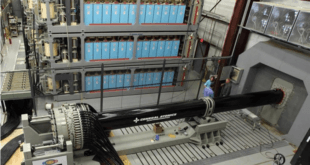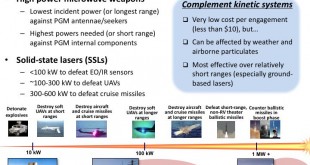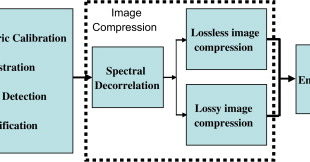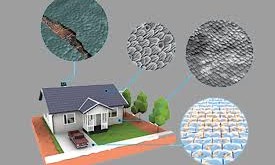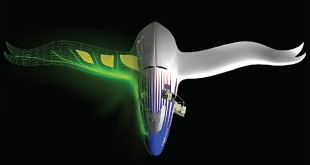Quantum sensors are measuring device that takes advantage of quantum correlations, such as states in a quantum superposition or entanglement, for better sensitivity and resolution than can be obtained by classical systems. QP will boost the capabilities of all sorts of sensory devices, such as gravimeters, which are used to …
Read More »Navies are testing Unmanned Autonomous vessels for COLREGs ( International Regulations for Preventing Collisions at Sea )
Autonomous vessels are one of the newest things in marine technology and many large organizations and companies are currently researching and testing unmanned vessels. There is a possibility that in a few years we will see unmanned vessels sailing in international waters. US Navy recently launched a fully autonomous, …
Read More »Supercapacitors critical components in Laser Directed Energy Weapons, Railguns and Electromagnetic Aircraft Launch System (EMALS)
Batteries are preferably to be used under circumstances where there is no possibility for charging, and besides this, in fields where it is important to store energy given the smaller mass and volume. Military applications of batteries include radio appliances, lamps or most electricity powered devices and equipment. Supercapacitors, …
Read More »Laser directed energy weapons technology breakthroughs enable them to be deployed on Trucks, Warships and Airplanes
The Laser Directed Energy Weapons (DEWs) offer a transformational ‘game changer’ to counter asymmetric and disruptive threats, while facing increasingly sophisticated traditional challenges. Laser technology provides major advantages for military applications over kinetic weapons due to High precision and rapid on-target effect, precise and scalable effects, avoidance of collateral damage …
Read More »Image compression systems becoming essential components on board satellites
Remote sensing of the environment, and especially Earth observation, is witnessing an explosion in terms of volume of available observations, which offer unprecedented capabilities towards the global-scale monitoring of natural and artificial processes. Satellite imaging payloads, mostly operate a store-and-forward mechanism, whereby the captured images are stored on board …
Read More »DARPA’s ELM developing Living Structural Materials for self growing & self repairable smart buildings and smart military bases on demand
The cities of today are built with concrete and steel between they are responsible for as much as a tenth of worldwide carbon emissions. Before they ever reach a construction site, both steel and concrete must be processed at very high temperatures – which take a lot of energy. And …
Read More »Next Robot revolution are robots with smart skin that can touch and feel
Robots have already become an indispensable part of our lives. Robots have revolutionized auto manufacturing, making plants safer and products more reliable — and reducing the number of people involved in the process. However, even inside a modern auto plant, robots have not been able to replace the human touch …
Read More »Militaries giving thrust to Biofuels as part of renewable drive and for cheap super-fuel for missiles and hypersonic planes
Biofuels are regarded as promising alternative to satisfy growing energy demands. Biomass derived biodiesel and bioethanol can be successfully utilized in modem vehicle engines with little or no modifications and thus contribute to lower combustion emissions in comparison to the former. Adequate production not only serves as long term replacement …
Read More »Militaries develop Morphing military Wings and Aircrafts to provide optimal performance in reconnaissance to bombing missions
The design of aerodynamic airfoils is optimized for certain conditions. For instance, the shape of the wings of fixed-wing aircrafts are designed and optimized for a certain flight condition (in terms of altitude, speed, aircraft weight, etc.). However, these flight conditions vary significantly during the flight. Currently, aircraft are provided …
Read More »Augmented reality displays moving towards smart contact lenses to enable vision of invisible computing
Smart glasses refer to wearable computing devices that add information to what the user sees. These devices function in a way similar to mobile phones and tablets and have the ability of processing and implementing various programs and applications. A majority of the smart glasses currently used in the market …
Read More » International Defense Security & Technology Your trusted Source for News, Research and Analysis
International Defense Security & Technology Your trusted Source for News, Research and Analysis


